16+ APA Annotated Bibliography Examples to Download
When it comes to conducting research and presenting credible sources, an annotated bibliography in APA format is an invaluable tool. In this article, we will explore what an APA annotated bibliography is, provide a step-by-step guide on how to write one, answer frequently asked questions, and present a collection of 16+ examples in Word, Google Docs, and PDF formats. Whether you’re a student, researcher, or writer, this comprehensive resource will help you master the art of creating an APA annotated bibliography while ensuring clarity, accuracy, and adherence to the required text structure.
1. Annotated Bibliography Research Template
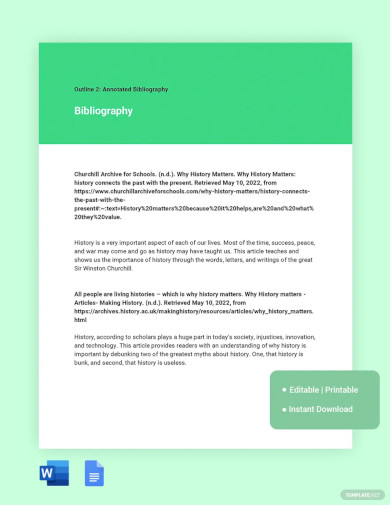
2. APA Bibliography Template

3. Annotated Bibliography Template
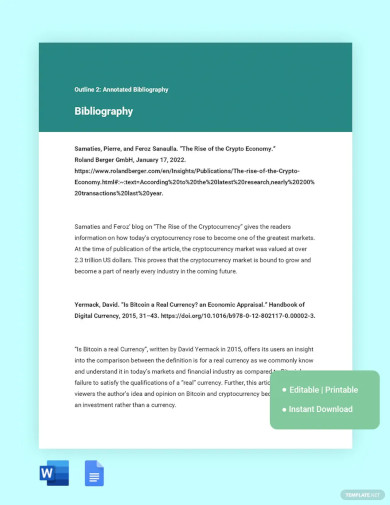
4. Research Project Annotated Bibliography Template

5. APA Annotated Bibliography Format
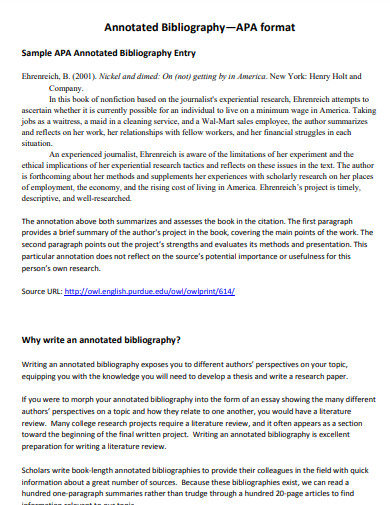
lindsey.edu
6. APA Annotated Bibliography Guide
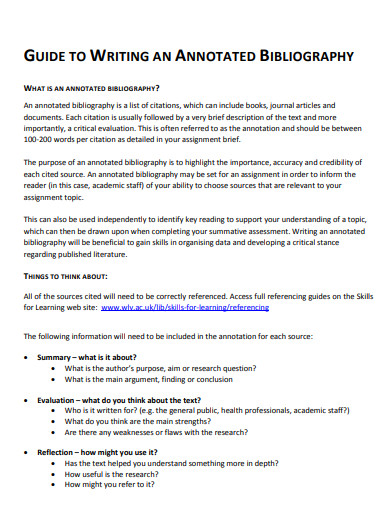
wlv.ac.uk
7. APA Annotated Bibliography Template
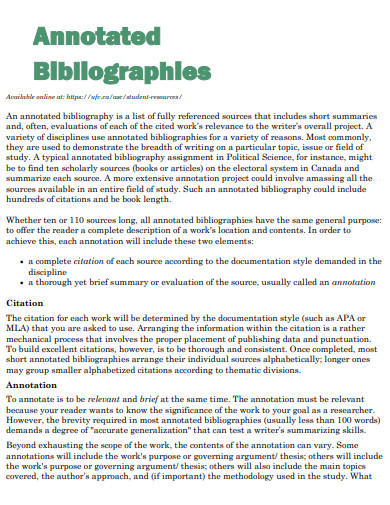
ufv.ca
8. Sample APA Annotated Bibliography

xavier.edu
9. Formal APA Annotated Bibliography
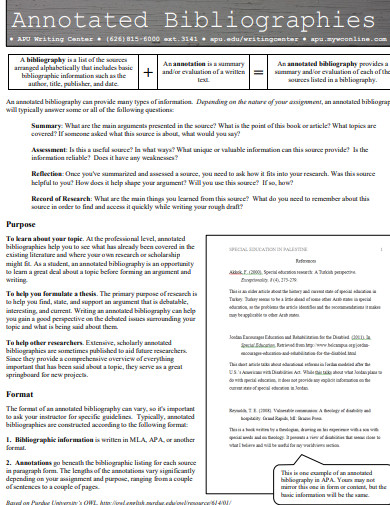
apu.edu
10. APA Style Annotated Bibliography

westernsydney.edu.au
11. Writing APA Annotated Bibliography

siu.edu
12. Simple APA Annotated Bibliography
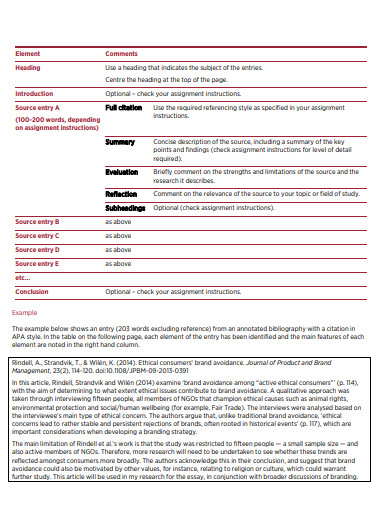
westernsydney.edu.au
13. Creating APA Annotated Bibliography
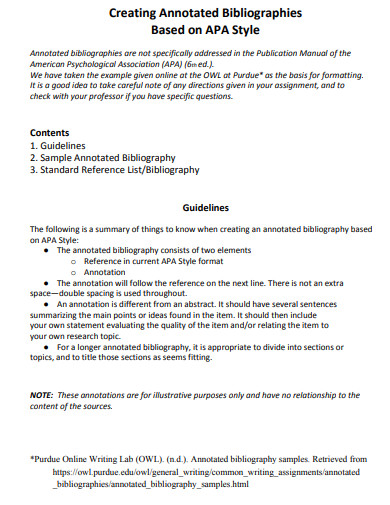
bethel.edu
14. APA 7th Annotated Bibliography
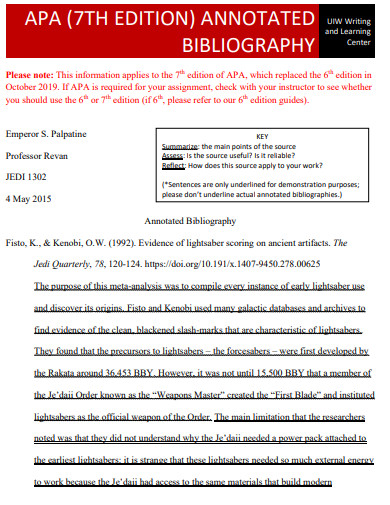
my.uiw.edu
15. APA Annotated Bibliography Formatting
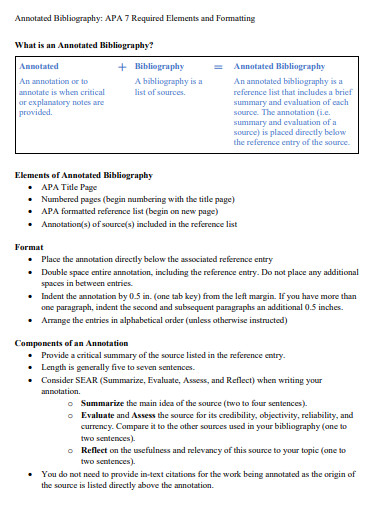
keyano.ca
16. Brief APA Annotated Bibliography
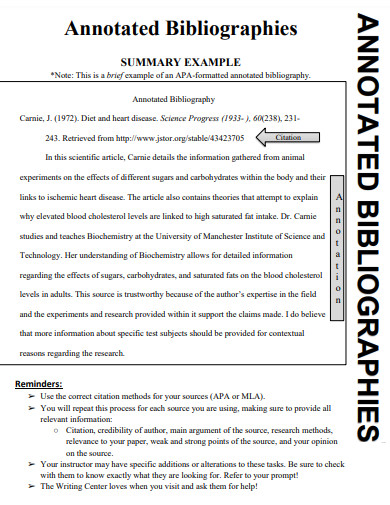
csusm.edu
17. APA Annotated Bibliography Reference
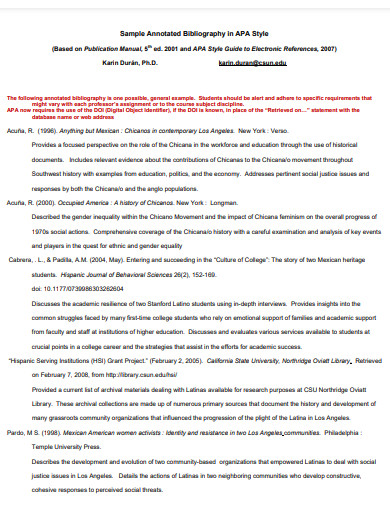
library.csun.edu
What is an APA Annotated Bibliography?
An APA annotated bibliography is a detailed list of sources accompanied by a concise summary and evaluation of each source’s relevance and quality. This type of bibliography follows the guidelines set forth by the American Psychological Association (APA) and serves as an essential component of an APA-style paper. While a regular bibliography provides a simple list of references, an annotated bibliography goes a step further by providing a brief analysis, offering insights into the source’s content, authority, and applicability to the research topic. The inclusion of annotations allows readers to understand the context and value of each source.
How to Write an APA Annotated Bibliography
Writing an APA annotated bibliography involves several crucial steps to ensure accuracy and compliance with APA citation standards. Follow this simple guide to create a comprehensive and well-structured annotated bibliography for your research project:
Step 1: Select Relevant Sources
Begin by identifying credible sources such as books, scholarly articles, or reputable websites that are relevant to your research topic.
Step 2: Cite in APA Format
Use proper APA in-text citation and create a reference list entry for each source following the APA format guidelines. The APA Format Book article provides detailed instructions on how to cite books using APA style.
Step 3: Summarize and Evaluate
For each source, provide a concise summary of its main points, methodologies, and findings. Evaluate the source’s credibility, authority, and objectivity, highlighting its strengths and weaknesses. The APA Citation article offers guidance on how to create accurate citations.
Step 4: Maintain a Consistent Text Structure
Follow a consistent structure for each annotation, including a brief introduction, summary, evaluation, and conclusion. This text structure ensures readability and facilitates understanding for readers.
Step 5: Revise and Proofread
Review your annotations for clarity, coherence, and grammar. Make sure each annotation is concise and free from any spelling or punctuation errors. The Function article explores the purpose and benefits of annotated bibliographies in academic writing.
FAQs
Why is an annotated bibliography important?
An annotated bibliography is important because it provides readers with a deeper understanding of the sources used in a research project. It helps researchers evaluate the quality, relevance, and reliability of sources, while also allowing readers to locate and access the referenced materials easily.
Can I include different types of sources in an annotated bibliography?
Yes, an annotated bibliography can include various types of sources, such as books, articles, websites, and multimedia. It’s essential to ensure that the selected sources are credible, reliable, and directly related to your research topic.
Does an annotated bibliography replace a conclusion in a research paper?
No, an annotated bibliography does not replace a conclusion in a research paper. While a conclusion summarizes the main findings and implications of the research, an annotated bibliography provides an analysis and evaluation of the sources used, allowing readers to assess their relevance and credibility.
Mastering the art of creating an APA annotated bibliography is a valuable skill that enhances your research and writing endeavors. By following the step-by-step guide and exploring the provided examples, you can ensure your annotations are accurate, well-structured, and adhere to APA citation standards. Remember that an annotated bibliography serves a crucial function in academic writing, offering readers a comprehensive understanding of the sources and their relevance to your research topic.

